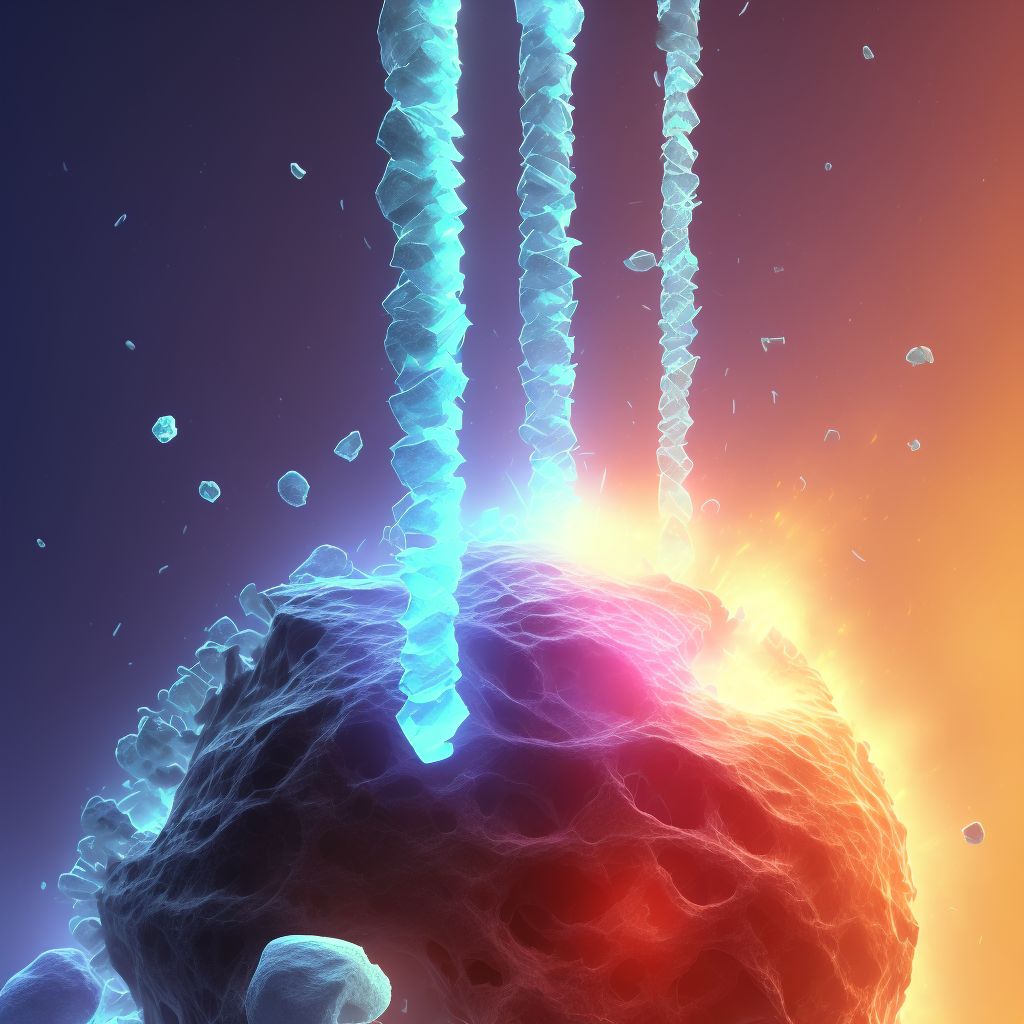
Nondisplaced transverse fracture of shaft of unspecified tibia, subsequent encounter for open fracture type I or II with routine healing Save
ICD-10 code: S82.226E
Disease category: S82.226: Nondisplaced transverse fracture of shaft of unspecified tibia
Nondisplaced Transverse Fracture of Shaft of Unspecified Tibia: Understanding Subsequent Encounter for Open Fracture Type I or II with Routine Healing
A nondisplaced transverse fracture of the shaft of unspecified tibia is a common type of fracture that occurs when the tibia, or shinbone, breaks in a straight line across its width. This type of fracture is usually caused by a direct blow or trauma to the lower leg. In some cases, the fracture may be accompanied by an open wound or laceration, which can increase the risk of infection and further complications.
If you have suffered a nondisplaced transverse fracture of the shaft of unspecified tibia and have undergone treatment for an open fracture type I or II with routine healing, you may be wondering what to expect during subsequent encounters with your healthcare provider. Here are some important things to keep in mind:
- Follow-up appointments: It is important to attend all follow-up appointments with your healthcare provider to ensure that your fracture is healing properly and to monitor for any signs of infection or complications.
- Diagnostic tests: Your healthcare provider may order diagnostic tests such as X-rays or CT scans to assess the healing progress of your fracture and ensure that there are no further complications.
- Physical therapy: Depending on the severity and location of your fracture, your healthcare provider may recommend physical therapy to help restore strength and mobility to your affected leg.
- Activity restrictions: Your healthcare provider may recommend activity restrictions such as avoiding high-impact activities or wearing a brace or cast to protect your leg while it heals.
- Pain management: Your healthcare provider may prescribe pain medication or recommend alternative pain management strategies such as ice or heat therapy to help manage any discomfort or pain associated with your fracture.
Remember, while a nondisplaced transverse fracture of the shaft of unspecified tibia can be a painful and frustrating injury, with proper treatment and follow-up care, it is possible to make a full recovery and return to your normal activities. If you have any questions or concerns about your fracture or subsequent encounters with your healthcare provider, don't hesitate to reach out and ask for guidance and support.
Treatment of Nondisplaced transverse fracture of shaft of unspecified tibia, subsequent encounter for open fracture type I or II with routine healing:
Treatment Options for Nondisplaced Transverse Fracture of Shaft of Unspecified Tibia, Subsequent Encounter for Open Fracture Type I or II with Routine Healing
A nondisplaced transverse fracture of the shaft of the unspecified tibia is a type of fracture that occurs when the bone is broken but still in alignment. This type of fracture is commonly treated with immobilization to allow...
To see full information about treatment please Sign up or Log in